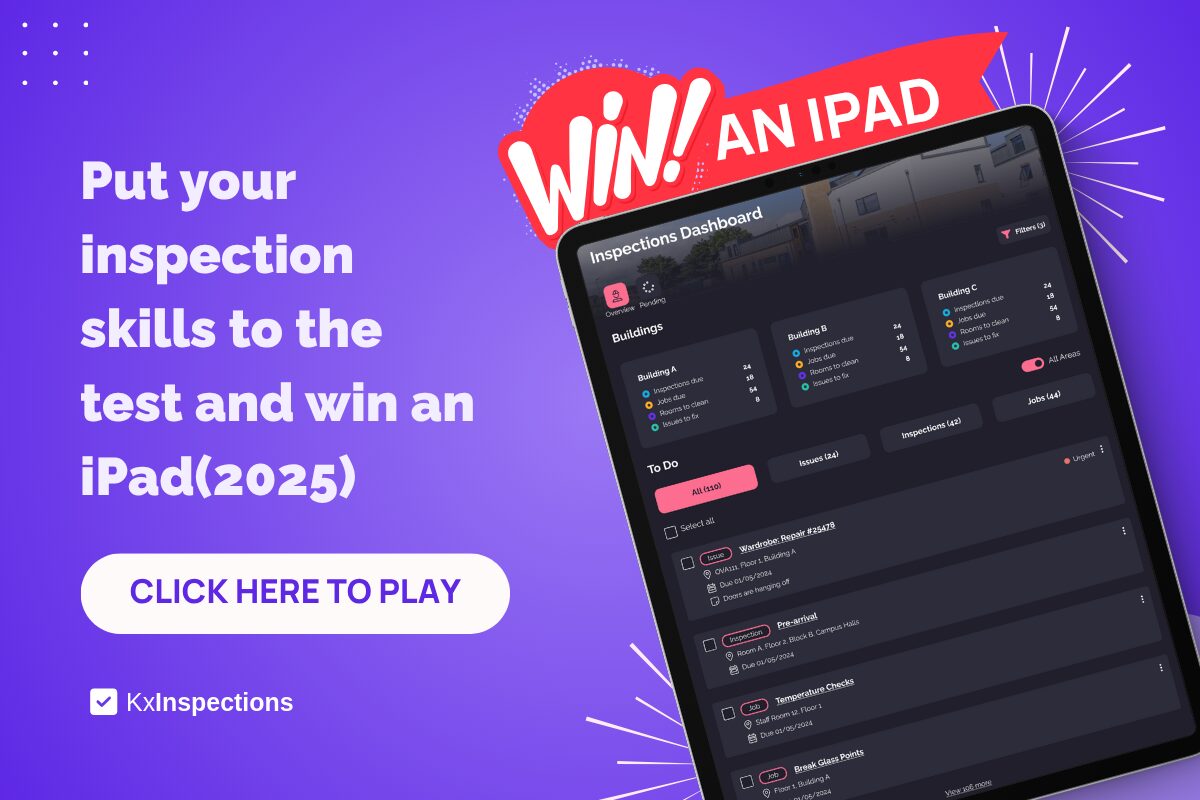Every campus handles inspections a little differently. Maybe you do two big sweeps—one before students arrive and another when they move out. Maybe you add quick mid-term spot checks or housekeeping reviews for general cleanliness. Whatever your rhythm—two cycles, three, or even four—relying on paper checklists, Excel sheets, or basic online forms makes each round feel like running uphill.
Your team gears up for pre-arrival week with a list of rooms and inventory items to check, printed forms and clipboards in hand. It gets the job done, but it drains energy and focus.
Later in the term, your housekeeping team might breeze through bathroom and carpet checks in about three minutes—if no issues pop up. But the moment a limescale-ridden sink or a heavily stained carpet shows up, they’re jotting notes, snapping photos with a personal phone, and later transcribing it all into yet another system.
By the end-of-stay week, you’re back to thorough, 20–30-minute inspections per room, verifying every inventory item is in ideal condition. At this point, your staff have already logged hours of manual work—and they still have data entry, dispute resolution and compliance reporting to tackle.
In a recent survey we conducted of accommodation professionals, about 31% said they wished their inspection tool included housekeeping integration. Nearly 29% wanted reactive maintenance workflows built in, and over a quarter asked for preventive maintenance scheduling and full facilities management alignment. Those numbers tell a simple truth: your team is tired of stitching together half-measures.
Feeling the Workload
It’s not that anyone minds doing inspections—they know it matters. The real issue is that manual processes shift the focus from supporting students to wrestling with paperwork. In some cases, staff end up doing overtime simply to clear backlogs and avoid last-minute scrambles. You lose weekends and evenings and the chance to have meaningful conversations with the students you’re there to help.
When the team is stuck fixing software silos instead of fixing rooms, fatigue sets in. Morale dips. And that stress seeps into interactions with residents. Students pick up on it: slower follow-ups on maintenance requests, and an overall sense that your team is under constant strain.
Hidden Costs You Can’t Ignore
Handwritten logs are magnets for mistakes, not only in maintenance schedules but also in inconsistent notes, which lead to student disputes, such as “Why am I being charged for that stained sink when my friend wasn’t?” These disputes can take hours to resolve.
Then there’s compliance. Regulators expect proof of who did what and when. Paper records can’t guarantee unalterable time-stamped photos or clear inspector identities.
Looking at the new code requirements, clipboards, paper forms, and manual processes simply don’t cut it. They create information silos, introduce human error and generate administrative headaches. Even well-intentioned homegrown solutions using spreadsheets or Microsoft or Google forms fall woefully short, unable to provide insightful data or automate some of the admin-heavy tasks when tracking hundreds of room inspections across multiple properties.
You’ve likely experienced the struggles with inconsistent assessment standards and the inevitable disputes that arise. These challenges aren’t just operational headaches – they represent real compliance risks under the new code.
A Simpler, Kinder Approach
With KxInspections, inspections become intuitive. Your team opens one mobile app (online or offline) and completes checklists in half the time of paper processes. Photos are attached automatically with accurate timestamps. Reports are sent instantly to students, and maintenance tasks are generated and shared with your maintenance team. Damage charges are posted directly into your finance system, eliminating duplicate entries. Wellbeing or accessibility tags guide inspectors to follow specific protocols per room, ensuring sensitive cases receive the extra attention they deserve.
The Interconnected Solution: Beyond Compliance
A connected inspection system not only meets compliance requirements but also improves your accommodation operations. The real benefit comes from creating smooth information sharing between everyone involved in the accommodation process, including housekeeping teams, finance, maintenance, IT, students, and other stakeholders.
A good system gives you clear insights into your building’s condition. It lets you compare how different accommodation blocks are doing, helping you spot facilities that need more investment or a different management approach. Over time, you can see patterns that help you predict when you need inspections and plan your staff accordingly.







